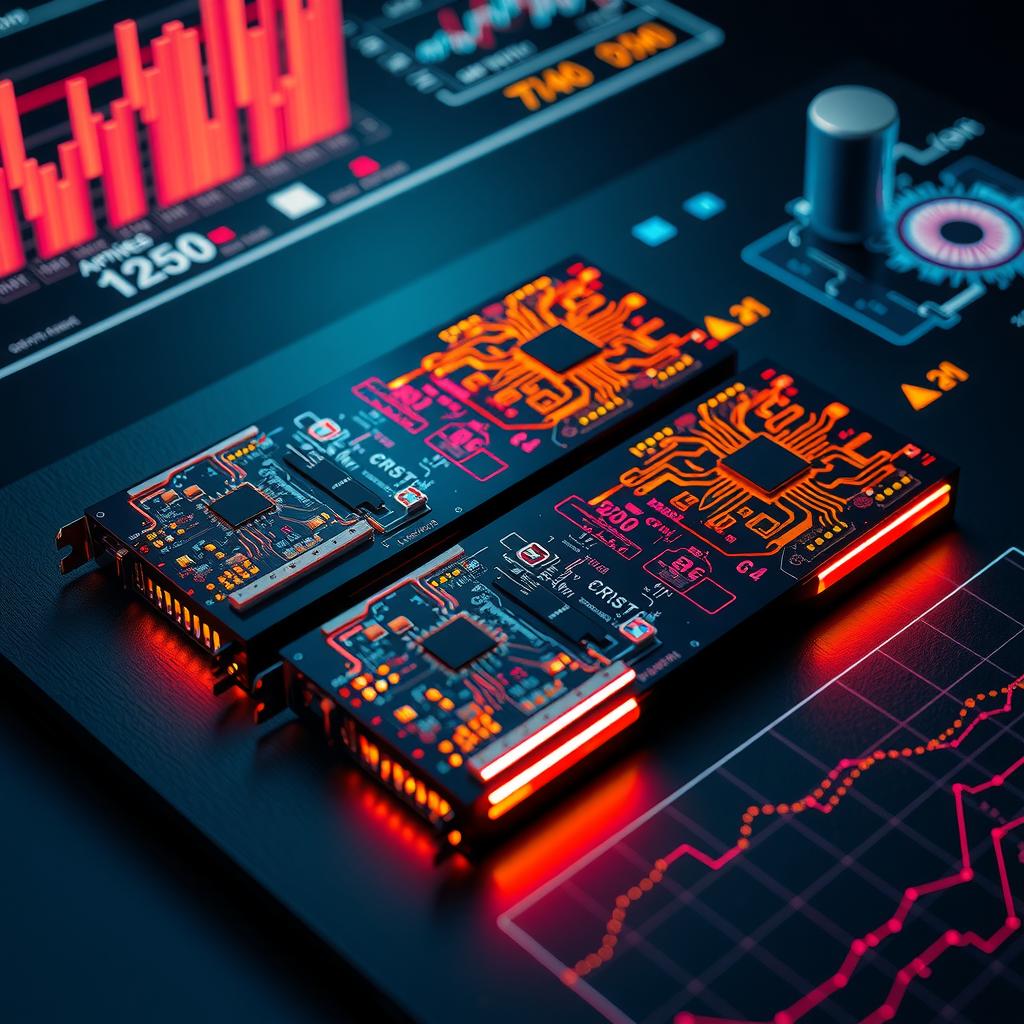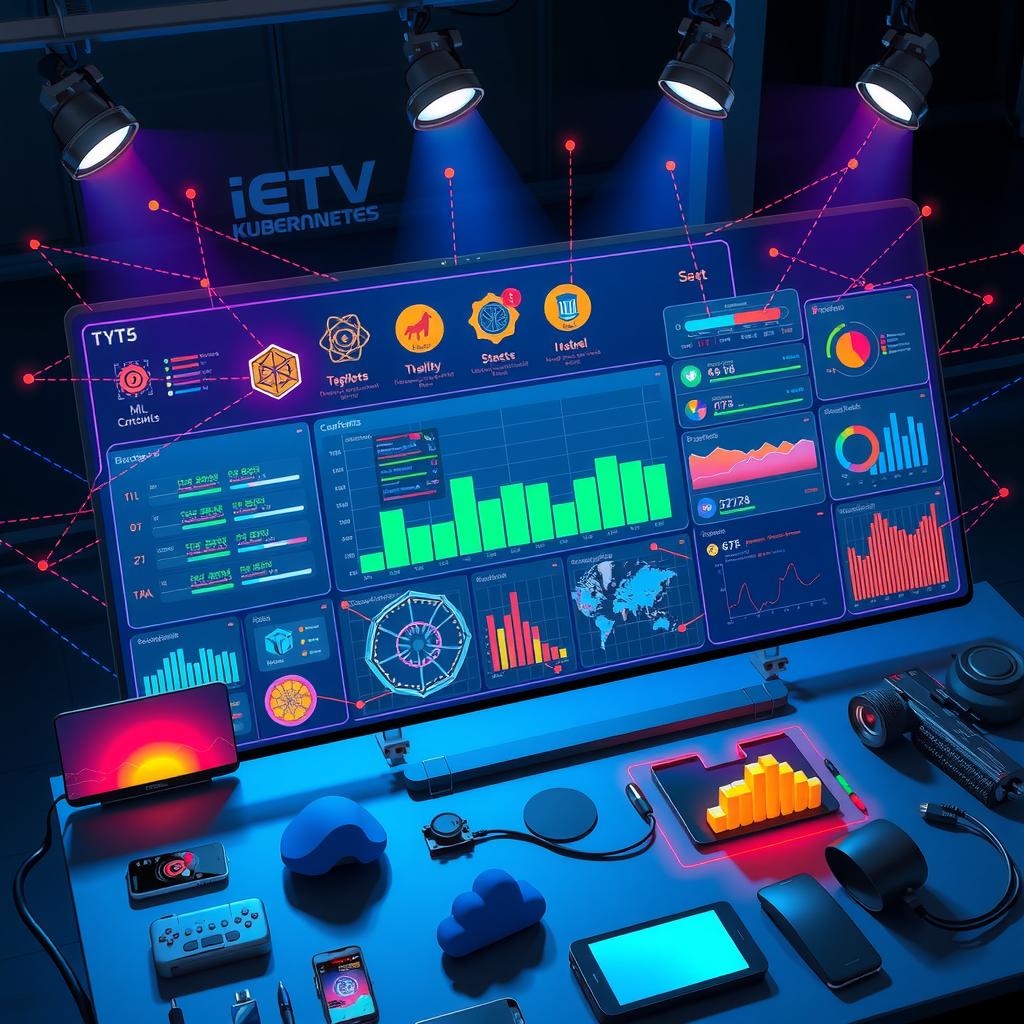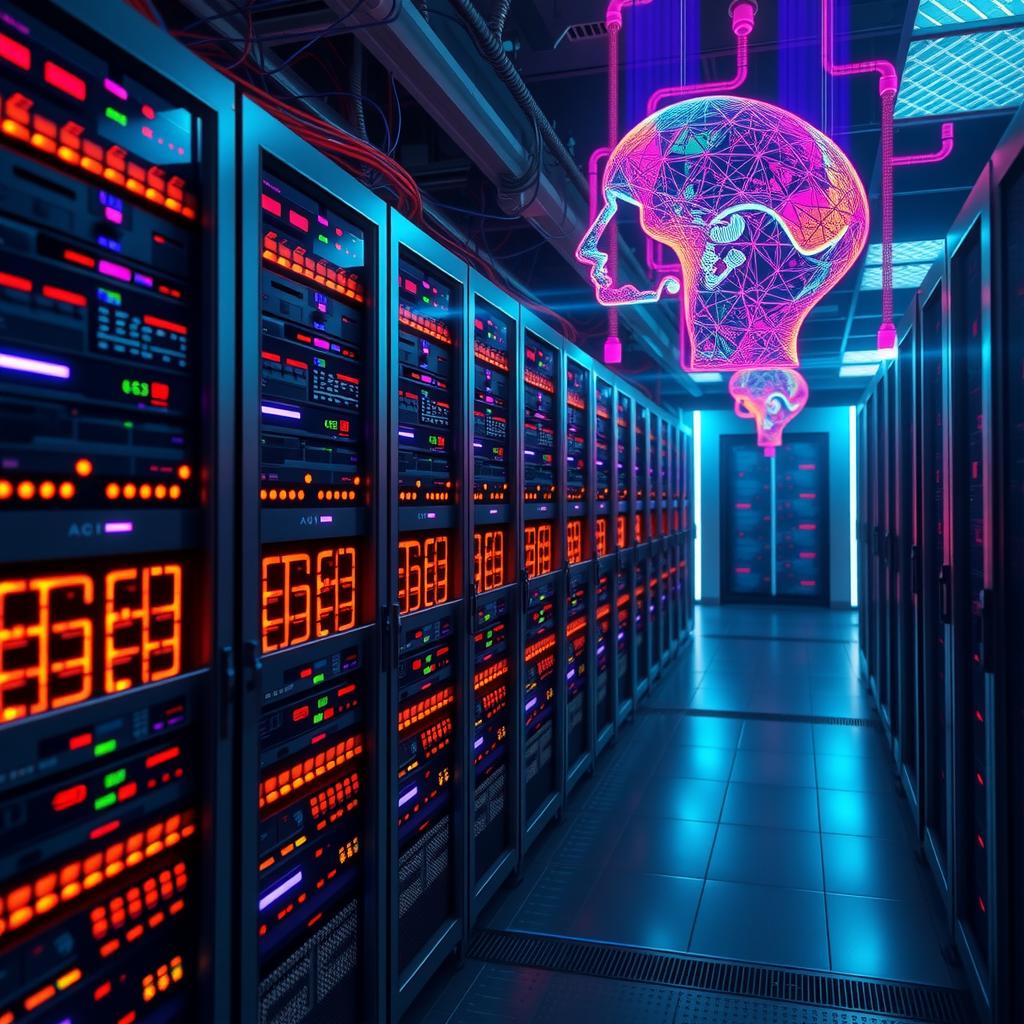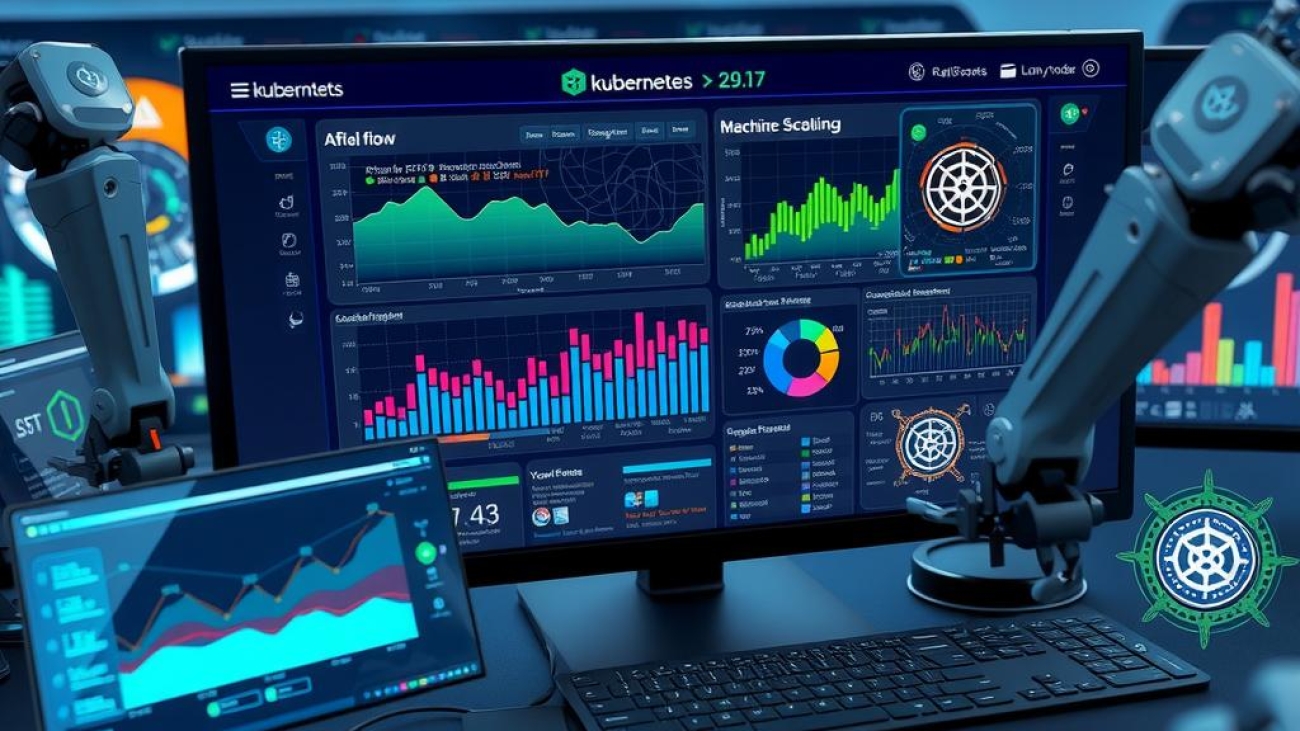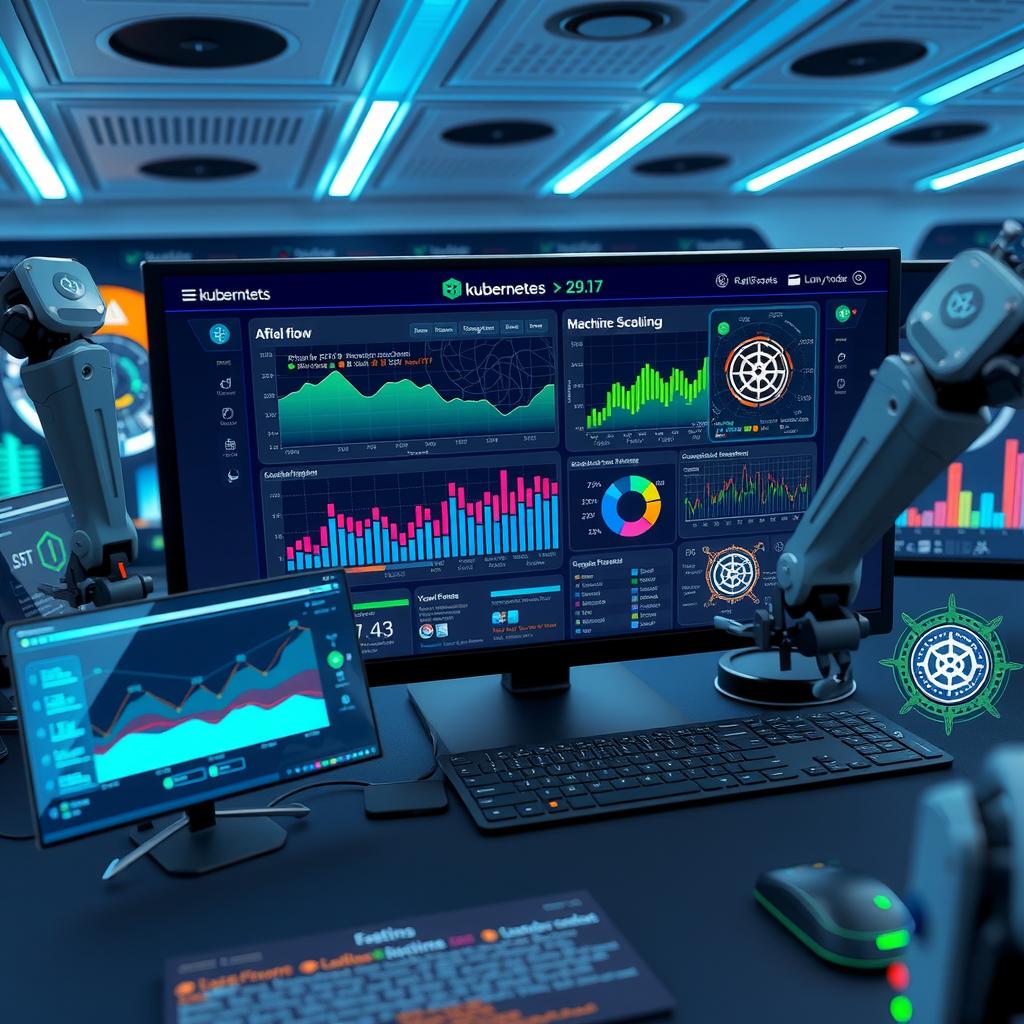In the rapidly evolving landscape of enterprise computing, organizations are increasingly confronted with the challenge of selecting the right infrastructure to meet their demanding workloads. As companies strive for enhanced computing power and improved data processing capabilities, understanding how various GPU servers stack up against one another has become crucial. The nuances between different models can significantly impact not only performance but also overall operational costs—essentially determining whether an organization’s investment yields substantial returns or leads to inefficiencies. This blog post delves into a comprehensive cost-performance analysis of leading enterprise GPU servers, highlighting the importance of making informed decisions based on thorough technology evaluation.
The core value presented here lies in equipping readers with insights that facilitate better choices when it comes to choosing their next server solution. By examining key factors such as server efficiency and performance optimization across a range of products, this analysis aims to uncover hidden advantages and potential pitfalls that may influence long-term success. In an era where every dollar counts, understanding these dynamics could mean the difference between harnessing cutting-edge technologies effectively or being weighed down by subpar performance.
As organizations explore options in today’s competitive market, they must grapple with essential questions: Which enterprise servers offer the best balance between cost and performance? How do various configurations affect total ownership costs over time? This article seeks to answer these pressing inquiries while guiding readers through a structured comparison process tailored specifically for high-demand environments. With newfound clarity on GPU comparison, decision-makers will be better positioned to navigate this complex landscape confidently.
Join us as we unravel this intricate web of technological possibilities and provide actionable insights that empower businesses to optimize their investments in GPU servers. Through detailed examination and thoughtful analysis, we’ll uncover paths toward maximizing both short-term gains and long-term sustainability in your organizational strategy—all while ensuring you remain well-informed about your options within this vital component of modern IT infrastructure.

Key Insights:
- Understanding Cost-Performance Metrics: A detailed examination of how different enterprise servers measure up against one another is essential for informed decision-making. By focusing on cost-performance analysis, organizations can identify which GPU solutions deliver the best value relative to their computational needs, ultimately leading to enhanced server efficiency.
- Impact of Computing Power and Energy Consumption: The capability of an enterprise server to handle intensive data processing workloads hinges significantly on its computing power. Additionally, energy consumption must be factored in when evaluating overall performance; this interplay between potency and sustainability defines the effectiveness of a technology deployment strategy.
- Scalability as a Key Factor in Server Selection: As businesses evolve, so do their requirements for robust data processing capabilities. Evaluating scalability within GPU comparison frameworks allows organizations to anticipate future growth while optimizing current investments. This proactive approach ensures that selected solutions not only meet immediate demands but also adapt seamlessly to changing operational landscapes.

The Crucial Role of Data Processing in Modern Enterprises
Understanding the Necessity for Enhanced Computing Power
In today’s data-driven landscape, enterprise servers have emerged as the backbone of organizational IT infrastructure, facilitating robust data processing capabilities that are essential for operational efficiency. With an ever-increasing volume of data being generated and processed every day, organizations face formidable challenges in selecting appropriate systems that meet their specific needs. This is particularly true when it comes to evaluating different server options based on GPU comparison, which plays a pivotal role in enhancing performance optimization for complex tasks such as machine learning and big data analytics. IT decision-makers must navigate a labyrinth of choices while ensuring that they consider both current requirements and future scalability. The stakes are high; a suboptimal selection may lead to increased operational costs or hindered productivity—a scenario most enterprises cannot afford.
The challenge intensifies when considering cost-performance analysis during the evaluation process. Organizations must weigh their budgetary constraints against the potential benefits offered by advanced GPUs integrated into enterprise servers. High-performance computing solutions can significantly enhance server efficiency but often come with premium pricing. Therefore, understanding how various GPU configurations impact overall computing power becomes essential for making informed decisions that align with business objectives without compromising financial prudence. Furthermore, as technology evolves rapidly, keeping abreast of advancements ensures that firms do not invest in outdated systems which could limit their agility and responsiveness to market demands.
Moreover, with numerous vendors offering diverse products tailored to specific applications—ranging from real-time data processing to artificial intelligence—evaluating each option requires meticulous consideration of both technical specifications and application scenarios. Factors such as thermal management capabilities, energy consumption levels, and compatibility with existing infrastructures further complicate this decision-making process. As organizations strive to optimize their operations through enhanced data processing, having access to comprehensive technology evaluations becomes paramount in identifying the right balance between performance output and resource allocation.
Navigating Vendor Choices
Evaluating Technology Solutions Amidst Market Saturation
Amidst market saturation featuring multiple players providing similar services within the realm of enterprise servers equipped with advanced GPUs lies another layer of complexity: vendor differentiation has become increasingly challenging yet incredibly important for IT leaders tasked with optimizing system performance while managing costs effectively. Each vendor touts unique selling propositions around features such as virtualization support or improved parallel processing abilities; however discerning what truly distinguishes one product from another is vital before committing substantial resources toward deployment efforts.
A thorough review should include assessing long-term service commitments alongside warranty offerings since these factors can greatly influence total cost ownership over time—a crucial component often overlooked within initial assessments focused solely on immediate value propositions derived from hardware specifications alone (e.g., memory bandwidth). Additionally engaging external consultants who specialize specifically in conducting impartial reviews helps alleviate biases inherent within internal teams prone towards favoritism stemming from past experiences working closely alongside particular manufacturers or suppliers.
Furthermore strategic partnerships established between software developers focusing on critical applications integrated directly onto chosen platforms will further extend functionality beyond mere computational speed alone into realms encompassing user experience enhancements via optimized interfaces designed expressly around intended workloads encountered daily across diverse departments including finance operations logistics etcetera—all reinforcing why careful diligence remains imperative throughout selection processes governing modern-day enterprise server procurement endeavors aimed at maximizing returns achieved through optimal utilization rates achieved via suitable GPU selections employed therein!
Future Trends Influencing Server Selection
Anticipating Innovations That Shape Data Processing Needs
As technological advancements continue unabatedly influencing how businesses operate globally—from cloud computing proliferation enabling remote accessibility anywhere anytime—to growing reliance upon AI-driven insights reshaping traditional methodologies—the implications these shifts carry concerning enterprise servers underscore an ongoing necessity revisiting foundational strategies underpinning acquisition frameworks guiding purchasing decisions related directly back towards effective GPU comparisons undertaken beforehand ultimately steering outcomes produced thereafter.
Emerging trends suggest heightened integration capabilities expected among next-generation chips emphasizing multi-core designs allowing simultaneous task execution at unprecedented speeds translating directly into superior throughput metrics observed across varied workloads run concurrently under single-server environments deployed strategically throughout entire networks spanning geographically dispersed locations linked together seamlessly thanks primarily due widespread adoption protocols governing distributed ledger technologies blockchain etc.. Consequently preparing ahead regarding anticipated growth trajectories tied inherently back towards core competencies revolving around computational prowess harnessed collectively drives home importance recognizing shifting paradigms underpinning relevance placed firmly upon successful navigation pathways leading forth toward sustainable prosperity realized only through judicious investments made now preparing adequately counteract uncertainties looming larger every passing moment pressing forward rapidly evolving digital landscapes transforming industries worldwide today tomorrow beyond horizons previously unimagined just waiting emerge fully formed ready seize opportunities lie ahead!
Cost-Performance Metrics in Server Selection
Understanding the Balance between Investment and Efficiency
In the contemporary landscape of technology, organizations face an imperative to optimize their server selection processes through a meticulous cost-performance analysis. This evaluation primarily hinges on three critical metrics: computing power, energy consumption, and scalability. The interrelationship among these factors significantly influences not only operational efficiency but also long-term financial sustainability within enterprises.
When assessing computing power, it is essential to consider how effectively a server can handle diverse workloads, particularly in data-heavy environments where rapid processing capabilities are paramount. Organizations often find themselves engaged in a nuanced comparison of different architectures, especially when contemplating options such as traditional CPU-based systems versus those leveraging advanced GPU technologies for enhanced performance optimization. Such evaluations reveal that while GPUs may entail higher initial costs, their superior computational abilities can lead to significant reductions in processing time and energy usage over time.
Energy consumption emerges as another pivotal component of the cost-performance matrix; it encompasses both direct costs associated with electricity bills and indirect expenses linked to cooling solutions necessary for maintaining optimal operating conditions. A thorough understanding of server efficiency—how much computational work can be accomplished per watt consumed—becomes crucial here. Companies should scrutinize specifications provided by manufacturers that detail energy use under various load conditions, enabling them to make informed decisions based on projected total cost of ownership rather than mere upfront expenditures.
Scalability adds another layer of complexity to this analysis; businesses must consider whether their chosen servers can adapt seamlessly to growing demands without necessitating complete hardware replacements or costly upgrades down the line. This aspect is particularly vital for organizations anticipating fluctuating workloads or exponential growth patterns within sectors like cloud computing or big data analytics. Misjudging scalability can result in premature obsolescence or hindered performance during peak operational periods—a scenario few companies can afford.
In navigating these multifaceted decision-making processes regarding enterprise servers, stakeholders benefit from employing structured frameworks that prioritize key metrics while remaining flexible enough to accommodate evolving technological landscapes. By integrating insights gained from comprehensive GPU comparisons alongside assessments grounded in real-world application contexts, firms position themselves favorably against competitors who might overlook critical aspects like performance optimization or future-proofing strategies.
Ultimately, conducting a detailed examination rooted in these core components allows organizations not only to enhance their immediate operational capabilities but also ensures they remain agile enough to tackle emerging challenges head-on—all while striving for excellence in service delivery amidst ever-changing market dynamics.
Best Practices for Selection: Real-World Insights and Case Studies
Implementing Actionable Strategies for Performance Optimization
In today’s competitive landscape, organizations continuously seek ways to enhance their operational efficiency while managing costs effectively. Successful implementations often showcase actionable strategies that drive performance optimization without compromising on quality. A prime example can be observed in the realm of enterprise servers, where a meticulous evaluation of GPU comparison plays a crucial role. Companies that integrate high-performance GPUs into their server architecture have reported significant improvements in data processing capabilities, allowing them to handle vast datasets more efficiently than traditional systems could manage. Furthermore, these organizations conduct thorough cost-performance analyses to ensure they are attaining maximum value from their investments. By prioritizing tailored solutions based on specific workload requirements, businesses not only optimize performance but also maintain cost-effectiveness.
Leveraging Technology Evaluation for Enhanced Efficiency
The importance of comprehensive technology evaluation cannot be overstated when considering best practices for selection in server deployment. Organizations that adopt a systematic approach to assessing various server options gain insights into which configurations yield the highest server efficiency and computing power relative to their budget constraints. For instance, case studies reveal that businesses employing rigorous benchmarking processes were able to identify underperforming components easily and replace them with more efficient alternatives promptly. This proactive strategy not only elevates overall system performance but also contributes significantly to reduced operational costs over time by ensuring that resources are utilized optimally.
Bridging Cost Management with Performance Metrics
Striking the right balance between cost management and performance metrics is critical in any successful implementation framework. Companies focusing on this dual objective often utilize advanced analytics tools capable of conducting real-time monitoring of system performance against predefined benchmarks related to financial expenditure and expected outcomes from hardware utilization—particularly within cloud environments where scalability is essential. As highlighted by industry leaders, organizations leveraging such methodologies have successfully achieved heightened levels of productivity while simultaneously reducing wastage associated with unnecessary resource allocations due to inefficient setups or misaligned expectations regarding output versus investment.
The Future Outlook: Balancing Innovation with Practicality
Looking ahead, it becomes evident that continuous innovation must go hand-in-hand with practical application if companies aim for sustained growth through optimized operations within their IT infrastructure frameworks—especially relating back again towards core areas like computing power enhancement via sophisticated enterprise servers equipped duly according toward modern-day demands posed by big data applications or AI-driven initiatives requiring rapid turnaround times on complex analytical tasks performed at scale across multiple platforms globally speaking as well connecting various stakeholders involved throughout different phases thus creating synergy among teams focused collectively upon achieving shared goals aligned closer together around strategic visions held forth moving forward aligning themselves better along established norms built previously paving pathways toward future successes anticipated broadly seen pervading trends emerging presently shaping up industries’ landscapes increasingly inclined towards technological advancement fused harmoniously alongside economic realities faced today intrinsically linked all around driving progress further down lines envisaged earlier established foundations solidly underpinning efforts made jointly ongoing endeavors embraced fervently heightening aspirations charted out meticulously aiming high amid challenges encountered consistently striving onward relentlessly driven evermore fueled passion ignited behind transformative potentialities envisioned continually unfolding intricacies embedded deeply rooted contexts evolving perpetually expanding horizons beckoning optimism bright illuminating paths ahead promising untold opportunities waiting just beyond reach eager hands ready grasp embrace wholeheartedly advancements laid before us now seeking harness full measure unlocking latent possibilities inherent therein engendering fruitful dividends reaped thereby nurturing growth fostering resilience enriching lives enhancing communities thriving harmoniously interconnected world forged collaboratively advancing steadily toward brighter tomorrows crafted diligently through concerted determination unwavering resolve united front poised take flight soar elevated heights reached soaring ambitions realized tangibly manifested outcomes reflecting dedication perseverance etched indelibly memory collective journey embarked upon together!
Frequently Asked Questions:
Q: What are the key benefits of using enterprise servers with GPU capabilities?
A: Utilizing enterprise servers equipped with GPU capabilities can significantly enhance an organization’s data processing efficiency. The integration of computing power from GPUs allows for faster processing and analysis of large datasets, enabling businesses to derive insights more quickly. Additionally, these systems often exhibit improved performance in tasks requiring parallel computation, making them ideal for applications like machine learning and scientific simulations.
Q: How should organizations approach a GPU comparison when evaluating different server options?
A: When conducting a GPU comparison, organizations should focus on several critical metrics including performance benchmarks, energy consumption, and scalability potential. It’s essential to assess how each solution aligns with specific workload requirements while also considering long-term operational costs. Evaluating case studies or real-world implementations can provide valuable context on how different configurations perform under varying conditions.
Q: What strategies can be employed to optimize the cost-performance ratio of enterprise servers?
A: To achieve optimal cost-performance ratios in enterprise servers, businesses should prioritize comprehensive cost-performance analysis during technology evaluation phases. This involves not only analyzing upfront hardware costs but also factoring in ongoing maintenance expenses, energy usage, and potential productivity gains over time. Implementing best practices such as regular system assessments and exploring various deployment models can further enhance overall server efficiency, ensuring that investments yield maximum returns without overspending.








